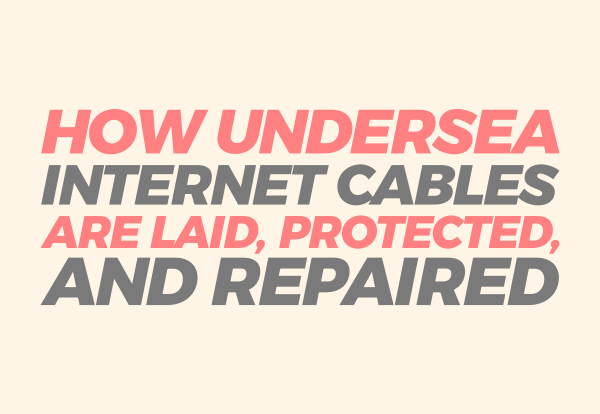Most of the world’s internet does not go through satellites. It travels through fiber cables on the ocean floor that link countries across oceans.
{tocify} $title={Table of Contents}
Quick look
- Ships slowly lay cables on the seabed
- Cables have strong layers to survive deep water
- Anchors and fishing gear are the main reasons cables break
- Repeaters keep the signal strong over long distances
- Repairs use ships, hooks, divers, or robots depending on depth
- Backup routes keep internet working when one cable fails
How ships lay undersea cables
Special ships carry large rolls of cable, and as they move, the cable slides off the back and settles on the seabed.
The cable is not laid in a straight line. It follows small curves like an 'S' shape so it can move a little without breaking and is easier to repair later.
Near shore, machines dig a narrow trench so the cable can be buried for extra safety.
Laying cables is expensive, with costs that can range from tens of thousands of dollars per kilometer to much higher depending on the route, seabed, and cable type.
What undersea cables are made of
At the center are thin glass fibers that carry data as light, surrounded by waterproof layers and steel for strength. In deep water the cable is slimmer, while near shore it is thicker and armored to handle anchors and rocks.
How the signal stays strong across oceans
Devices called repeaters are placed every 50 to 100 km along the route to refresh the light signal so it can travel across an ocean, and they get their power from the same cable that carries the data.
What usually damages undersea cables
Animals rarely cause trouble. Most damage comes from ship anchors or fishing nets dragging along the seabed, and natural events like quakes or undersea landslides can also break cables.
Industry reports usually count around 100 to 200 faults a year worldwide, though the number can go up or down depending on storms, quakes, or human activity.
How broken cables are repaired
If the cable is near shore, divers can help with the repair. In deeper water, repair ships use hooks to lift the cable, cut out the broken part, and connect a new section, and sometimes robots are used to bury it again. Some repair ships stay on standby so they can respond faster when faults happen.
Why internet still works when cables break
One broken cable does not stop the internet because traffic shifts to other cables, so connections keep running even if speeds are slower until the repair is done.
Why undersea cables are still important
Satellites are useful, but they are slower because signals travel much farther. Almost all international internet data still goes through undersea cables because they are faster and more stable, and they are likely to stay important for a long time.
Read also: Why Computers Are More Vulnerable to Viruses Than Mobile Devices

